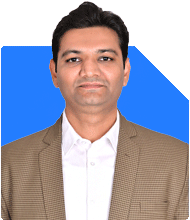Anil Rego | Answer |Ask -Follow
Financial Planner - Answered on Nov 01, 2022
He’s an expert in income tax and wealth management.
He has completed his CFA/MBA from the ICFAI Business School.... more

Can you provide best salary structure for person drawing CTC above Rs 15 lakh per annum, with best options in exemption, deductions, and rebates?
- There are various options to claim exemptions under section 80C by investing a maximum of 1.5 lakh into various investment option like insurance premiums, PPF, EPF, senior citizen savings scheme, home loan principal, Sukanya Samriddhi yojana (if you have a girl child), 5 years tax saving FD, ELSS MF, NSC etc.
- You can claim Rs 50,000 deduction in addition to section 80C by investing in NPS under section 80CCD.
- You can also avail health cover for self and family and claim deduction under section 80D (if you are below 60 years, you can claim maximum of Rs 25,000; if your parents are above 60, you can claim for up to Rs 50,000)
- You can claim up to Rs 2 lakh under section 24 if you have a home loan. The home loan interest can be claimed up to Rs 2 lakh
- There is also a standard deduction of Rs 50,000
- Overall you can claim a maximum of Rs 4.75 lakh deduction with the above mentioned options
- You can also claim deduction on any charity made towards recognised organisations
Exemptions that you can also claim:
- You can claim HRA on Actual HRA received by employer or 50% or 40% of the basic salary depending upon a metro or a non-metro location, respectively or Rent paid minus 10% of basic salary (lower of any of this is taken into consideration)
- Leave Travel Allowance: This can be claimed on 2 trips in a block of 4 calendar years. In case no claim is made in a block, individuals can carry it over to the next block. You need to check your eligibility for LTA. The LTA amount will be subjected to the salary structure provided by the employer.
- Exemption on perquisites like car, mobile bill, food coupons
- Other exemptions like children education allowances are also applicable
All these exemptions will have limits which is uniform or based on your salary
You may like to see similar questions and answers below
Mihir Tanna |1069 Answers |Ask -Follow
Tax Expert - Answered on Apr 20, 2023
Mihir Tanna |1069 Answers |Ask -Follow
Tax Expert - Answered on Feb 13, 2025
Vipul Bhavsar |97 Answers |Ask -Follow
Tax Expert - Answered on Feb 12, 2025
Mihir Tanna |1069 Answers |Ask -Follow
Tax Expert - Answered on Apr 28, 2025
Nayagam P P |9487 Answers |Ask -Follow
Career Counsellor - Answered on Jul 27, 2025
Radheshyam Zanwar |5872 Answers |Ask -Follow
MHT-CET, IIT-JEE, NEET-UG Expert - Answered on Jul 27, 2025
Nayagam P P |9487 Answers |Ask -Follow
Career Counsellor - Answered on Jul 27, 2025
Radheshyam Zanwar |5872 Answers |Ask -Follow
MHT-CET, IIT-JEE, NEET-UG Expert - Answered on Jul 27, 2025
Radheshyam Zanwar |5872 Answers |Ask -Follow
MHT-CET, IIT-JEE, NEET-UG Expert - Answered on Jul 27, 2025
Radheshyam Zanwar |5872 Answers |Ask -Follow
MHT-CET, IIT-JEE, NEET-UG Expert - Answered on Jul 27, 2025
Radheshyam Zanwar |5872 Answers |Ask -Follow
MHT-CET, IIT-JEE, NEET-UG Expert - Answered on Jul 27, 2025
Radheshyam Zanwar |5872 Answers |Ask -Follow
MHT-CET, IIT-JEE, NEET-UG Expert - Answered on Jul 27, 2025
Nayagam P P |9487 Answers |Ask -Follow
Career Counsellor - Answered on Jul 27, 2025
Nayagam P P |9487 Answers |Ask -Follow
Career Counsellor - Answered on Jul 27, 2025





















